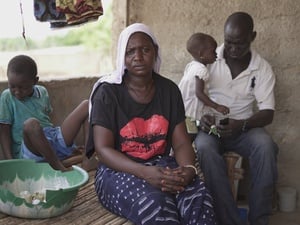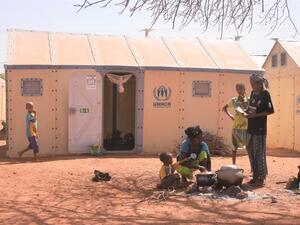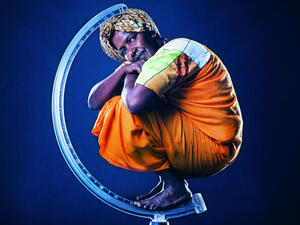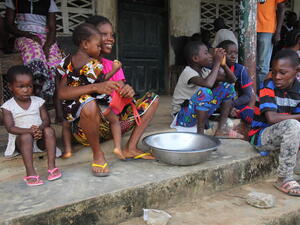Pockets of refugees from Togo located in remote areas
Pockets of refugees from Togo located in remote areas
The post-electoral refugee outflow from Togo into neighbouring Benin and Ghana has slowed across the major border crossing points but pockets of refugees who have crossed over informally have been recently located in both countries, pushing the combined total of refugees to 26,084. This is up from 23,186 on Monday.
In Ghana, the daily number of new arrivals at the main Aflao border crossing adjacent to the Togolese capital Lomé, is now down to a single digit trickle with only three arriving on Thursday. However, a joint mobile monitoring mission by UNHCR, the government and a non-governmental organisation over the last few days has located additional arrivals, some in very remote and inaccessible areas along the border. This could provisionally boost the number of refugees in Ghana to around 12,800. We are currently verifying the arrival figures. Some of the refugees were in poor condition and required immediate food and non-food assistance. Refugees started fleeing general insecurity in Togo after the election results were announced on 26 April.
On Friday, there were 10,866 registered refugees in Ghana. After a surge of some 850 refugees returning to Togo on Sunday and Monday ahead of the working week, the pace of returns has slowed sharply with 15 refugees noted returning on Thursday. We are currently verifying departures and consolidating figures. While most refugees in Ghana have found shelter with generous family and friends, their resources are now beginning to run low and there is an increasing need to distribute food and non-food assistance such as mats, jerry cans, mosquito nets, soap etc. A joint UN interagency food needs assessment mission is now taking place along a 200 km stretch of the eastern border with Togo from the Jasikan/Kadjebi area south to Aflao. It is expected to report its findings next week.
In Benin, 15,218 refugees are now registered, with a steady pace of arrivals ranging between 140 -150 a day, registered at the main Hilakondji border crossing. This is sharply down from the peak of the influx where over 1,000 refugees a day were arriving daily. While most refugees continue to arrive at Hilakondji, several hundred refugees have been located sheltering in central Benin in the Collines, Otola and Djidja areas km approx. 230 km north of the capital of Cotonou.
Around 59 per cent of the refugee population in Benin are living with family or friends with 41 per cent living at the two camps sites of Lokossa and Come. There are no longer refugees staying at the Hilakondji transit centre located on church grounds. Facilities at both camps are being upgraded with the construction of extra latrines and showers.









